Google Adsense—>

2017 New Year’s Resolutions
Reviewing Life Goals
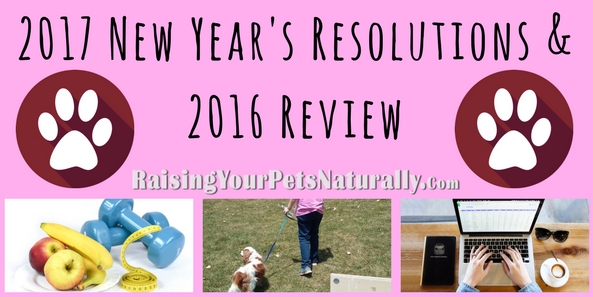
How did you do with your New Year’s resolutions in 2016?
Sticking to New Year's resolutions can be hard. I mean, if you think about, it it's a goal you find challenging. If it were easy for you, you’d already be doing it, and you wouldn’t have it on a list of things you want to change.Click To TweetPersonally, I know my challenges and try to work on them regularly. But, like so many others, I did set forth with three goals for 2016.
- Work on my 3-year plan
- Weight-loss and healthy eating
- Stay organized and on track
Number one on my list, working on my 3-year plan, was always at the forefront of my day. I’m in my forties, so it is important for me to stay focused on my career and future goals. This 3-year plan encompasses a lot of things in my life, some professional and some personal. This year for my career, I wanted to branch out with more pet freelance work and speaking at pet expos, write another pet book, and work on my personal pet blog.
What I didn’t know was that during this process I would end up totally re-branding my company and the focus of my brand-Raising Your Pets Naturally with Tonya Wilhelm. This rebranding was just what I needed. However, with this, I also ended up taking my main website and 3 blogs and merging them to a new website and host. This was—and still is—a HUGE project. I’m still going over 10 years of online pet articles and reformatting, fixing links, and updating images. Then, there is the issue about SEO and getting my new website listed and linked up across the internet. That’s doing well again, but I still have improvements to make.
#1 is doing well, but like with everything I do, I don’t feel like I am where I wanted to be. Maybe my goal is too high.
Next on my list is the notorious weight-loss and healthy eating. I joined a local gym in January and hit the gym almost daily. Things were on track and I was losing some weight. Eating healthy was going okay, but not fantastic. I’m always so busy and I’m single, which makes cooking a healthy meal quite challenging. At one point I told myself, before buying something to eat, I would ask myself “would I feed it to Dexter?” Basically, that meant it needed to be fresh, not from a box or filled with junk.
My #2 goal of losing weight and healthy eating went by the wayside when number #1 kicked in with the rebranding. That felt so central to my life that I didn’t even want to spend the 60-90 minutes away from other parts of my life, like work. I mean, I ALWAYS make my time for my pets and family, so something had to give, right? Since this goal is more personal and is about me, it always gets lost and deprioritized.
My final New Year’s resolution was to stay organized and on track. Not being organized has always been funny to me, because I’m a girl who loves drawers, bins, organizational tools, etc. Everything does have a place, but the problem for me has been to get those things back to their place when I’m finished. Maybe it ties in with the second part, staying on track. For me, I have like five projects I’m working on all on my desk, on the table next to me, over there and here. Don’t get me wrong, though—I never miss a deadline, and usually finish early.
This year, I bought a new computer desk, new office chair, a few wall calendars, and a new blogging calendar. I’m even looking at one of those 32-37” professional computer monitors so that I can have two regular-sized windows open at the same time! Keeping my thoughts and tasks in place comes and goes.
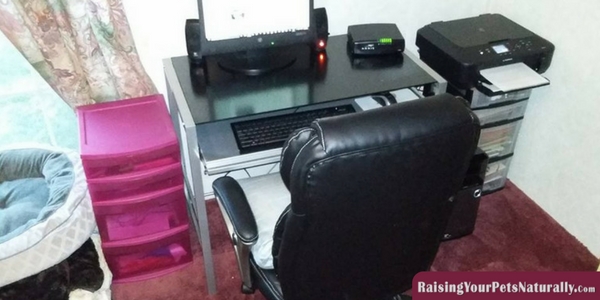
The staying on track part for me is to stick with a daily task plan. But that’s always challenging in my line of work. My main source of income is seeing dog training and cat behavior clients in person or via phone/Skype. So I never know what time of day I will end up booking a session, and what time of day will be free for other work. Or an article idea pops into my head and I feel like I need to write it NOW. My goal, is to just keep my ongoing “to write” list going and when my writing day arrives, go down the list. Or if my website optimization day is here, work on that. At least that’s the goal.
What does that mean for me for 2017? Like with anything, it’s about trying, and getting back up to try again when I’m not successful. We aren’t perfect. Just because I didn’t reach my 2016 goals doesn’t mean I can’t try them again for 2017.
My goal this year is to continue on my path. The first thing I will do is to pull out my trusty calendar, and work on scheduling my daily tasks and goals so I can stick to the plan easier. When something actually makes my planner, I am more likely to follow through.
I plan on writing another book this year, this one about kids and dogs, geared toward kids. I am also thinking about writing a cookbook for busy people who are not cooks! That’s me. My theory is if I make healthy eating part of my career (or my now 2-year plan), I will look at it as a necessity to eat better and cook for myself, instead of something to put off to the side.
It was brought to my attention in a blogger group that we must take time for ourselves. I sort of was looking at this part as #2, but if #2 still has a business angle, am I really putting work aside to JUST BE? Even when I’m in bed trying to unwind from the day, I am looking at my phone on how to improve x. So, I think I will add a #4 to my resolution list, to disconnect from anything work related. This may actually be my hardest challenge for the year!
At least those are my 2017 goals for now.
What about you? Do you struggle with New Year’s resolutions?
Tell me in the comments.
Are you looking for even more ways to stay up to date with Raising Your Pets Naturally? Sign up for the newsletter for more tips and promotions. Don’t forget to be social and Like, Follow and Subscribe. Comments below are always welcome.
Facebook Twitter Pinterest Instagram YouTube Vimeo
 |




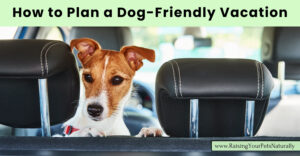
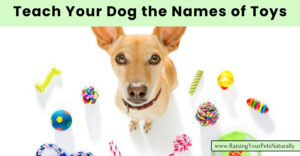
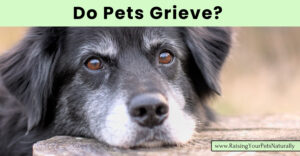
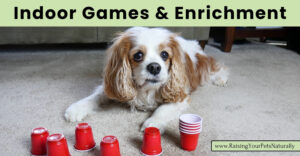
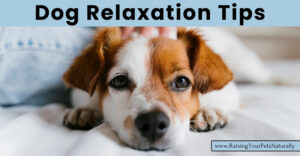
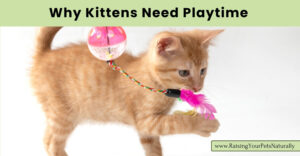
I have found that in order for New Year’s Resolutions to stick is to make them very specific. “Working on weight loss and healthy eating” is very vague. Set a specific target, as in “I will weight “x” by “date”. I will eat “x” servings of fresh fruit and veggies per day. I will eat no more than “x” unhealthy items per day. Much easier to stick with. Just a thought.
Thanks, Judy! I do have weight loss goal/date. Missed it in 2016.
Missed it in 2016.  I think you’re right about having more of a food plan. That might be better for me since eating fresh is so hard for me. Maybe if I force myself to eat those things I will start to enjoy them more and even feel satisfied. Thanks for the tips!
I think you’re right about having more of a food plan. That might be better for me since eating fresh is so hard for me. Maybe if I force myself to eat those things I will start to enjoy them more and even feel satisfied. Thanks for the tips!
Have a great new year!
I am so impressed with all you hope to have in store for yourself in 2017! I like the thought of not giving up all you had wanted in 2016 and letting it carry into 2017. Life happens and the goal to just keep striving is the best attitude. My only hope is that you succeed in moving yourself up more to the forefront and not leave yourself at the bottom. Your family human and furry and your friends who care about you..want you to be happy and healthy..not perfect. Give to yourself more often so you can give to others as you choose in a happier state. Putting your family high up in priorities is so important and its admirable that you do. Some have lost sight of this. On the food front, eating healthy as been a challenge for me, I did not meet my goals..at all. I know my body has suffered and most likely I’ve had more migraines as a result. One thing that helps and I hope to utilize more, is to look for uncooked but prepared foods. Like meats and veggies prepackaged together..minus all the extra chunk. I am also going to try harder to have two crock pots going for freezing meals, one for pups and one tweaked more appetizing for humans. I actually love cooking so I guess that motivation and time is lacking..or more accurately time management. Your comment on being organized and liking drawers/containers and such made me laugh..same..same here. I hope 2017 brings you closer to your dream! The beach is waiting..you will get there.
Thanks, Barbara. That is very kind of you. I really am hoping to take care of myself this year. Reminds me of the old Seinfeld episode, The Summer of George. lol
Long ago I forgo making any resolutions, at least I don’t call it that anymore. Instead I focus on what I would like to do and accomplish in the upcoming year, that way it’s not as overwhelming.
Professionally I want to focus on my blog – refining it and planning out my posts in advance.
That is a great focus! Good luck.
My hardest job is setting aside time just to….be. With nothing else going on. When you work for yourself, and are always “on” with never ending projects, there’s no quitting time. So I’m struggling to get better about that.
Thanks, Amy. Me too!
You seem like you have your goals figured out with a plan on how you will achieve them. I think that is a really big deciding factor if you’ll actually be able to stick to them. Good luck to you, I’m inspired to set my own!
Thanks. I appreciate that.
Oh my gosh, you and I have SO much in common! This year I marked 16 months of a serious lifestyle change, re-branding of my blog (still working on that) and the struggle to pay more quality attention to myself is ever-present. We are twinsies! You go!!! You can kick butt this year! It sounds like you have already come so far!
You go!!! You can kick butt this year! It sounds like you have already come so far!
Hahaha Thanks, Shannon! I’m glad I’m not the only one with these struggles. You go too!
Hey – I think you are doing fantastic! Good golly, you’re doing a lot and often times it’s when we are busy ‘doing’ that it’s harder for us to practice self-care. But I hear you – exercising and losing weight are tough, maybe if we focused on health (like you asked yourself about “would you feed this to Dexter”). We often laugh when we nibble on Cheetos, admitting that the dogs eat better than us. Hey, maybe we need to start a healthy eating pet blogger support group!! I’m right there with you!
Hahaha Oh, I think you might be on to something Rebecca!
It’s a little more difficult for me to focus on resolutions this year since I found out I was taking an early retirement (unexpected).
I wish you the best in 2017. Being open for new things would be a great one for you!
I have had a hard time thinking of resolutions for this year. 2016 was a great year for my blog! I know I need to set some goals to help 2017 to be just as good, or hopefully better!
Congratulations on a great 2016~ Better.
Those sound like wonderful New Year’s Resolutions! I have found that my own resolutions don’t last that long, so now I’m just try to make better adjustments. Unfortunately, I haven’t been very successful with some of them, especially exercising and eating healthy. I bought some new cookbooks and I hope that will make a big difference.
Thanks for sharing Beth. I hope those cookbooks help. I’m not sure about recipes for me, that’s my downside, I just tend to wing it, hence not such a tasty meal. I need to be better!
You’ve had so much success, that’s wonderful! You tackled a huge project in 2016, that alone is a giant goal. I like to tell myself to set goals but to be Flexible, that way I’m not too disappointed when I go off track with a new idea or opportunity. Flexibility is important. I’m finalizing my goals for 2017 right now, I’m hoping for a successful year!
Love & Biscuits,
Dogs Luv Us and We Luv Them
Thanks, Cathy. I appreciate your comments and support. I try to go with the flow, and I do, but my type A kicks in….haha
We aim to stay healthy and organised. We have goals for the blog and ourselves – here’s to a good 2017.
Thanks! 2017 is going to be great, I can feel it!
I’m still working on blog goals for the year but I have some personal ones established so far.
That’s great! I wish you and Mr. N a great year.
Those look like great goals, and you seem to be off to a great start. Well done! I’m working on daily goals and organization. I plan to celebrate each accomplishment and not beat myself on anything that will be carried over to the next day.
Thanks, Sadie. One of my goals is to have daily goals, so I can feel like I’ve done something.
Good luck on your goals! We have several goals we wish to accomplish as well. Healthy eating is definitely one of them!
Thanks. Good luck to you Kia!
Best thing I ever did was focus on nutrition. About 7-8 years ago I slowly dropped sugar, wheat, refined and processed foods and so on … it’s 70% of any weight loss process versus exercise that counts for the remaining 30%. Feel so good…. but it was a HUGE lifestyle change. That is for sure. YOU GOT THIS!
Thanks, Sonja. I’m so scared about trying to drop sugar. I’m such a sugar junkie. Little steps, little steps.
I have to ask myself the same question when I’m about to eat something – I’m picky when it comes to what my dogs eat, but I forget to eat fresh foods myself!
We have a lot in common!
New year resolutions we make to break them but some we need to follow through for our own benefit
Interesting